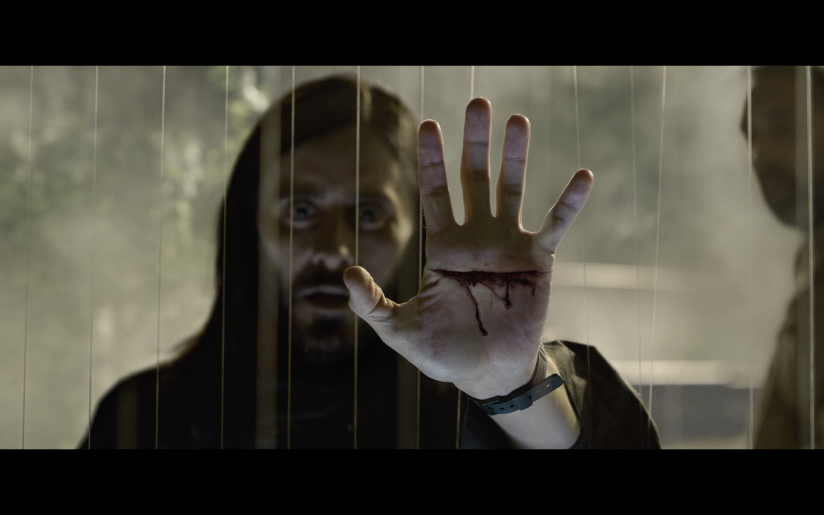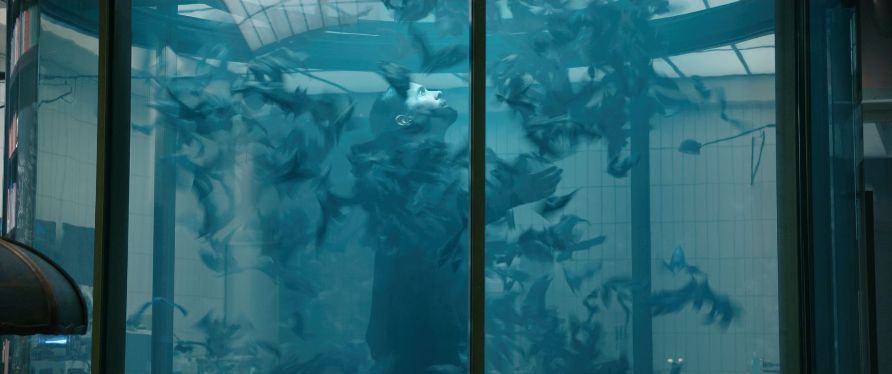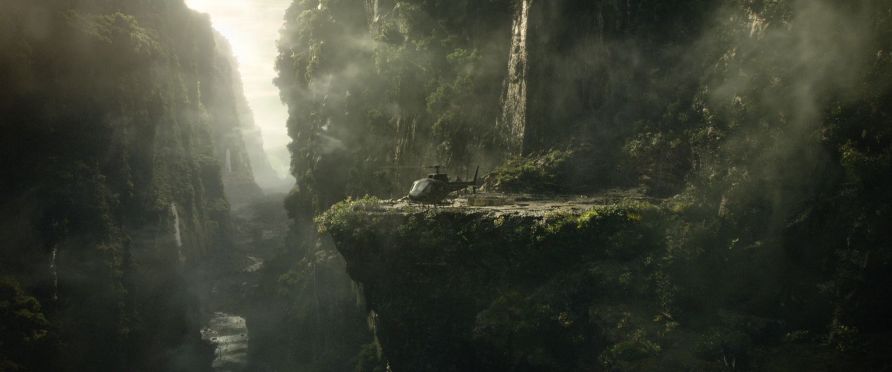We present, exclusively, an interview with Lars Andersen and Ola Hamletsen of One Of Us VFX, a company specializing in the creation of visual effects, who recently worked on Morbius, the Sony adaptation directed by Daniel Espinosa and starring Jared Leto.
Welcome to Lo Spazio Bianco. Can you first of all introduce yourselves to our readers?
Lars Andersen – I joined One of Us in 2016, where I established myself as a creative supervisor. I have built working relationships with directors Justin Kurzel on Assassins’ Creed, Steve McQueen on Widows and several art projects, and Daniel Espinosa on Life and Morbius – on which I was VFX Supervisor.
Ola Hamletsen – I am a VFX Supervisor at One Of Us in London, where I’ve worked for the past 5 years. I started out as an FX artist and have been through a variety of roles on the CG side of things. On Morbius my role was CG Supervisor.
How did you get involved in the creation of Morbius?
Lars: I worked on Life, which was Daniel Espinosa’s previous film, so that must have been part of it. But there are usually multiple connections that land a project, and of course, the company’s reputation. Ola and I worked together on Aladdin and got on well together, so it was nice to move onto a new project.
Ola: I joined this project alongside Lars after having worked with him on a few projects together. Most recently, and relevant, to this was the work we did on Aladdin. On Morbius we needed to create huge crowds of CG bats and big full CG environments. Building on lessons learned from those previous projects, Morbius had loads of exciting challenges that I think suited me well with my background as an FX artist.

From your website, I can see that 66 artists have worked on Morbius, creating 216 sequences VFX shots. How was the work divided within the team and what sequences you took on particularly?
Lars: Morbius was an interesting allround project. There was some simpler stuff, there was really complex CG stuff, a lot of bats – millions of bats actually – and some nice CG environments.
All the creature work was very cool. We started working on Morbius in 2019 and at that time One of Us was just getting into the creature’s work. It was the first project we started looking at outsourcing in a large capacity, it was really interesting. Coming from Aladdin it was quite nice, we got to rebuild those assets ourselves and then it was very collaborative. There was a particular sequence, where the two main characters are on a rooftop, that was very conceptual and creative, it was a nice group of work. Moreover it was very nice to work with Daniel Espinosa again, he was very excited, even in the creative process, an incredibly loving person so it was exciting to work with him on that front.
Among those, which one do you consider the most challenging?
Ola: One of the biggest challenges was the bats. Throughout the film there’s a lot of shots where we see bats. From the opening sequence in Costa Rica, where we see hundreds of thousands of them, and later in Morbius’ laboratory. A lot of research and effort was put into studying things like the motion of bats on an individual level as well as how they move together as a flock. Another component to this was what the bats look like, both in terms of physical appearance and animation. There was a balancing act where we needed the bats to convey either a feeling or a story point without having them be too anthropomorphic.

Lars: The big question we had to ask ourselves was: How do you define / conform or convey emotions with swarms of bats in a tube?
Ola: One story point that we tried to get across is how Morbius’ interaction with the bats changes through the film. In the opening sequence they’re meant to be scary. A threat. Then later, when he has them in captivity in his laboratory, we see that after his transformation the bats change from being wild animals to accepting Morbius as “one of them”. The challenge was how to convey that story point through animation and simulation of how these bats move around.

During the film production have you collaborated with other vfx companies?
Lars: Morbius was one of the first jobs we took on as a primary vendor. We were coming in alongside Digital Domain and other big companies that were working on this film. Digital Domain did most of the work around the character of Morbius himself, like his vampire face and creature effects, like him flying around. We focused more on building the bats animations and, as you can see in the film, there are a lot of bats.
What was your favourite sequence?
Ola: The opening sequence of the film was my favourite. It involved a number of interesting challenges for us. We had to build two large scale CG environments; a tropical gorge and a big bat cave. A lot of work went into building these environments and filling them with enough detail so that they look realistic. Moreover, another key part of this sequence is the really nice close up shot of a bat. On the CG side, that sequence has like a little bit of everything. That was also what I worked the most on directly myself.

Lars: The other interesting part of that sequence is that it is very dark, because we are inside a cave. We were all working from home at the time, due to covid, so imagine, how can we really convey that beautiful shadow details, when you are in a bright living room, desperately trying to review something? You can try your best to push it further and further, but you never really get the full scope of what you are doing. Until around July 2020, when we got back to the office, and I remember we all went to watch it for the first time in a dark room on a cinema screen with the audio turned up to absolute max volume and I think we all had that moment where we thought ‘Wow, this is actually amazing! This is so cool’.
What are the technologies that you have used working on this film? Can you talk about them more in detail, perhaps describing their scope on a determined sequence?
Ola: For the shots with a huge amount of bats in them we had to come up with a workflow that allowed us to visualise them efficiently. We relied heavily on Houdini for making that work. The motion of the swarms of bats needed a lot of art direction, and Houdini allowed us to do that in a very controlled way. At the same time we were able to set it up in a way so that it would all render in an efficient manner. Throughout the project we made a number of tools to make that process as efficient as possible.

What was the level of supervision by Sony on your work? There were exchanges of ideas on certain sequences or did they trust you completely?
Lars: When we worked with Daniel Espinosa on Life, we created the cells of the alien and a few things like that that were very accurate and I think he remembered very well about working with us. One of Us has a reputation of really redefining and refining creative ideas. So he trusted us, definitely in that more conceptual sequence where the two main characters are on the rooftop having conversations. That abstract representation of the powers that he has as they talk with their eyes closed and the world turning into a light volcano all swallowing around. That was extremely different defining what that was meant to look like, that took a long time and I think we nailed it. We never put anything in front of them that they weren’t excited to see. Again it was such a wonderful team on their side. and working with Matt Butler, the supervisor, and Barry St John, the producer. They were all amazing and very enthusiastic and there was a lot of trust. Daniel Espinosa just knew exactly where we were going and he just said ‘Let’s do this thing, let’s do that…’ I think there was a lot of trust which was good.
What are your next projects?
Lars Andersen – Working on a Marvel project.
Ola Hamletsen – I’m in the early stages of working on a action/spy thriller for Netflix






